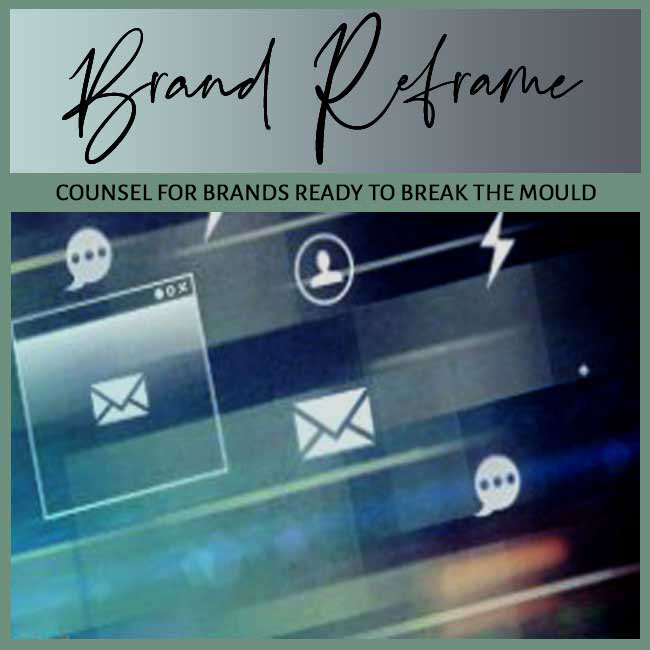
BY: SHOBHA PONNAPPA | BRAND BREAKTHROUGH STRATEGIST | 45 YEARS | 125+ CLIENTS
Brand legacy is the enduring impact your brand leaves long after campaigns end and products evolve. It is the sum of your values, contributions, and emotional imprint on customers and culture. A strong brand legacy makes your work last beyond trends. Without it, a business may succeed temporarily but fade when new players arrive. Legacy gives a brand meaning that outlives individual offerings. It transforms short-term success into long-term influence.
In my work with seasoned leaders, I’ve seen that legacy thinking changes decision-making profoundly. Brands that plan for legacy choose depth over noise and purpose over quick wins. They cultivate trust, continuity, and relevance across generations. A shallow brand often disappears once market conditions shift. Legacy acts as a stabiliser when everything else changes. It becomes an asset investors, employees, and customers value.
Today’s market rewards brands with substance and consistency. Audiences remember those who stand for something meaningful over time. A lasting legacy creates competitive durability and emotional loyalty. With rapid disruption, many brands rise fast and vanish just as quickly. Legacy-focused brands build reputations that withstand change. They evolve while staying true to enduring principles.
Investors and acquirers pay attention to legacy because it signals resilience. A brand with a long-term story can command higher valuations. It reassures employees about stability and vision. Legacy builds credibility and trust across stakeholders. In an era of fleeting hype, durability stands out. Longevity becomes a powerful differentiator.
Legacy begins with a purpose that transcends trends and tactics. It should express why your brand matters in a way that remains relevant. A timeless purpose guides decades of decisions. Short-term fads cannot replace deep mission clarity. Purpose gives meaning to innovation and pivots. It inspires loyalty even as markets shift.
Leaders must articulate purpose in language that outlasts marketing cycles. Avoid buzzwords that will date quickly. Instead, root purpose in human truth. Clear purpose creates a stable centre of gravity. It enables the brand to evolve without losing essence. Over time, it shapes culture and reputation.
Values define the behavioural code of your organisation. Legacy grows when those values are lived, not just stated. Consistency between words and actions builds trust over decades. Hypocrisy destroys legacy faster than any market disruption. Customers and employees remember actions more than slogans. Alignment builds moral authority.
Leaders should turn values into daily practices and rituals. Recognition systems, hiring choices, and policies should reflect them. Over time, these habits form brand memory. Values lived repeatedly create enduring respect. They become the story employees and customers tell. Culture then becomes a vessel for legacy.
Legacy requires leaving behind something of real value. It could be innovation, cultural influence, or social impact. Brands that contribute meaningfully are remembered long after transactions end. Mere profit-making does not inspire enduring loyalty. Contribution creates pride among employees and advocates. It defines why history will care.
Identify contributions that align with your expertise and purpose. Innovate in ways that change your category or empower your community. Celebrate milestones of impact authentically. Tangible contributions secure a place in collective memory. Over decades, these shape your reputation’s depth. They also attract partners who value meaning.
Legacy thrives when it transcends individual leaders or product cycles. Systems and culture must allow the brand to endure transitions. Generational continuity turns vision into an institution. Without it, brands collapse when founders leave or markets shift. Continuity demands succession planning and adaptability. It lets the story evolve while staying true.
Leaders should document history, principles, and practices. Mentor successors who embody the core mission. Build governance that protects essence while encouraging innovation. Strong continuity preserves trust through change. Customers feel confident staying loyal. Employees invest their careers in enduring institutions.
Start by clarifying purpose and values before chasing growth metrics. Define what impact you want remembered decades from now. Design strategy to balance short-term wins with long-term meaning. Avoid only chasing quick market grabs that dilute identity. Build culture around enduring principles. Early choices shape long-term reputation.
Seek milestones that matter beyond profit, like innovation or community impact. Share your journey transparently with stakeholders. Encourage employees to see themselves as legacy builders. Early alignment creates strong foundation for future growth. Document lessons and rituals as you scale. Institutional memory keeps brands grounded.
As your business matures, periodically revisit purpose, values, and contribution. Refresh storytelling but protect the core. Evolution keeps legacy alive without breaking continuity. Generations of leaders must embrace the mission in new ways. Keep internal culture and customer trust at the centre. Regular reflection ensures relevance and respect.
Leaders should celebrate anniversaries and achievements meaningfully. Involve employees, partners, and customers in legacy milestones. Share stories that honour history while inspiring the future. Sustaining legacy requires both memory and adaptation. Avoid stagnation by pairing respect for roots with innovation. This balance keeps brands powerful across eras.
One mistake is confusing legacy with nostalgia. Staying stuck in the past makes brands irrelevant. Another trap is abandoning values for short-term gain. Compromising integrity may bring quick wins but erodes long-term trust. Poor succession planning is equally damaging. Legacy fails when leadership transitions break culture.
Ignoring cultural documentation also weakens continuity. Without a recorded history and rituals, memory fades. Over-polishing stories can feel fake and hollow. Authenticity is vital for true legacy. Brands should own both triumphs and challenges. This honesty deepens respect over time.
A century-old retail brand feared losing its soul with new leadership. I helped articulate and document its timeless purpose of everyday dignity. Successors embraced the mission and modernised operations. Clear purpose anchored growth and transition. Employees felt connected to history and future. Customers stayed loyal through change.
A scaling software firm risked cultural drift. I turned stated values into daily rituals and recognition systems. Morale and retention improved even during rapid hiring. Living values strengthened identity and trust. Investors praised the stable culture. Growth became sustainable and respected.
A popular drink wanted to be more than a trend. I shaped its legacy around community wellbeing and sustainable sourcing. Initiatives became core to marketing and supply chain. Meaningful contribution turned fad into institution. Media celebrated its impact widely. Consumers rewarded integrity with loyalty.
A founder-led fashion house lacked succession clarity. I built a leadership development and heritage documentation programme. Next-generation leaders carried the vision forward. Continuity protected prestige and relevance. Customers trusted the smooth transition. The brand’s equity grew stronger.
A social impact organisation risked losing early stories. I created an archive and storytelling culture to preserve roots. New leaders felt connected to founders’ mission. Historical memory kept purpose vibrant. Donors felt reassured about consistency. Volunteer enthusiasm increased as well.
A trusted medical brand risked seeming outdated. I refreshed narrative to honour history while highlighting cutting-edge solutions. Stakeholders appreciated respect for legacy plus forward motion. Balanced storytelling preserved trust and relevance. Market share grew despite new entrants. Employees felt renewed pride.
If customers and employees describe your brand with pride and history, you’re on track. Media or partners reference your enduring principles. Clear purpose and impact signal legacy building. Consistent values over time deepen trust. Successors should feel empowered to continue the mission. When influence lasts beyond campaigns, legacy is forming.
Yes. Planning for legacy early guides better choices and prevents reactive growth. It does not mean resisting change but staying true to core. Early legacy thinking builds a solid brand backbone. Startups benefit from clarity of mission and values. Investors appreciate foresight and stability. Growth becomes more sustainable.
Not at all. Legacy depends on relevance, which requires innovation aligned with purpose. Stagnation kills lasting influence. Purpose-driven innovation sustains legacy. Brands should evolve products and communication while keeping values intact. Customers respect change rooted in core mission. This balance protects long-term equity.
By documenting history, mentoring future leaders, and codifying culture. Publicly honouring founders while empowering new vision helps. Smooth transitions build trust. Succession planning is key to legacy survival. Leaders should prepare years in advance. Clarity avoids conflict and drift.
Yes. Investors favour brands with durable trust and mission clarity. Legacy shows resilience beyond short-term cycles. Strong legacy signals lower risk and higher value. Partnerships form more easily with trusted, enduring names. Customers also pay premiums for reliable heritage. Longevity becomes an economic advantage.
It’s a long-term pursuit measured in decades, not months. But intentional action speeds progress. Embedding values, purpose, and impact early helps. Legacy compounds through consistent action over time. Each milestone builds depth and memory. The sooner you start, the stronger your heritage.
Explore Brand Legacy Underuse … Real Cases & Fixes
Case Studies
FAQ Insights

"One BIG IDEA can turn brand stagnation into unstoppable movement. Spots are limited each week ... book your breakthrough session now."
Shobha Ponnappa
My Definitive Guides to Other Critical Branding Concepts
Smart insights, real-world frameworks, and idea-driven clarity – designed to help brands move.
Get my fortnightly Brand Reframe newsletter. Smart insights, distilled thinking, and focused momentum to help your brand lead.

Get my free AI strategy guide. Smart prompts, sharper briefs, and practical ways to make AI support your brand momentum.

Just fill in the form to join. Get my newsletter and the guide shown alongside, all with several game-changing tips.